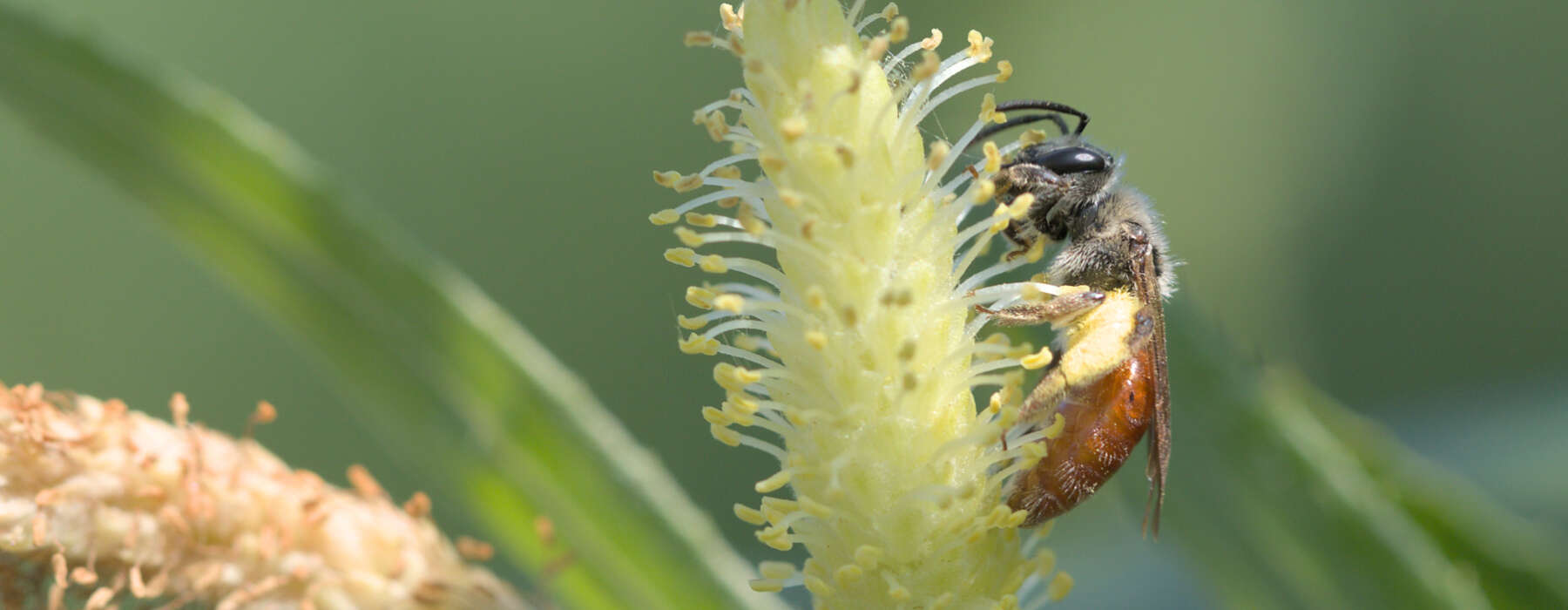Our biologists rarely turn off their search engines. While exploring a swimming hole in Montpelier, Spencer Hardy, our bee biologist, stumbled upon a plant that he’s been trying to find flowering for several years, Sandbar Willow (Salix interior). Unlike other willow species in Vermont that bloom early in spring, Sandbar Willow blooms in late June and early July on newly grown shoots. This difference in phenology has important implications for the associated bees, as most of the willow specialists are done flying by late May.
Returning a few weeks later in hopes of finding flowers, he was rewarded with his target – the second Vermont record of the Sandbar Willow Fairy Bee (Perdita maculigera). With the patch in full bloom, Spencer was surprised by the number and diversity of bees visiting, including many summer-active species previously not recorded feeding on flowering willows in Vermont.
After a few minutes, a bright red bee appeared and captured his attention. Knowing it was likely something unusual and that a voucher specimen would be necessary to identify it to species, he carefully snapped a few photos before reaching for it with the net. A seemingly perfect swing somehow came up empty and the bee disappeared. Ten minutes later, it briefly reappeared, but once again it eluded his net and vanished. An hour later the red bee reappeared and was quickly captured.
While the photos proved inconclusive, under the microscope, Spencer easily identified the mystery red bee as Maria Miner Bee (Andrena mariae), a species previously unknown from Vermont. This species is widely distributed in North America, but poorly known in the Northeast with only a handful of recent records. Spencer followed up his late June discovery with a second record in early July in a patch of flowering Sandbar Willow in Alburgh.
It will take additional work to determine the conservation status and natural history of this bee, but in the meantime, it’s amazing to think about all the bees that remain to be discovered despite years of historic collections and dedicated searching by the Vermont Wild Bee Survey.







